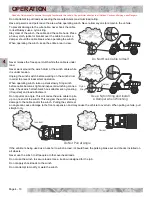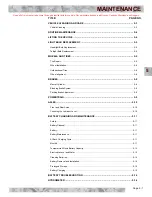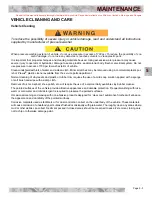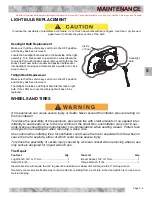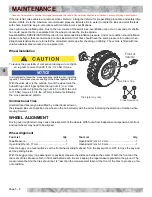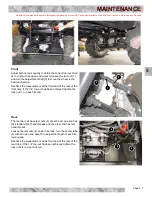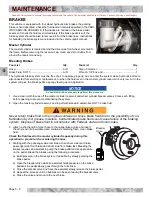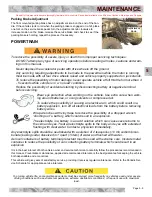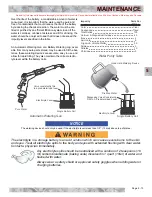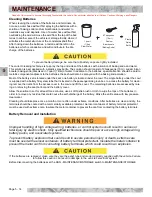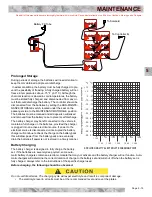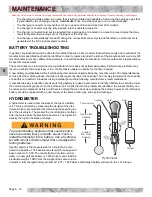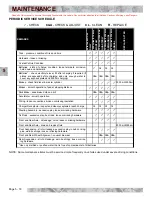
MAINTENANCE
Read all of this manual to become thoroughly familiar with this vehicle. Pay particular attention to all Notices, Cautions, Warnings, and Dangers.
Page 5 - 12
5
•
Replace all terminal covers.
•
Replace battery compartment cover and note service date on chart.
Temperature Affects Battery Capacity
Battery storage capacity is affected by the temperature; the
colder it is, the less energy it is able to store; as temperature
increases so does the storage capacity of the battery.
The ideal battery temperature for deep cycle batteries that
are available today is 77°F (25°C). At 32°F (0°C) the storage
capacity of the battery will be reduced by 20%, this means in
cold weather the vehicle will not travel as far as it would in
warm weather.
Electrolyte Level and Water
The correct level of the electrolyte is 1/2” (13 mm) above the
plates in each cell.
This level will leave approximately 1/4” - 3/8” (6 - 10 mm) of
space between the electrolyte and the vent tube. The electro-
lyte level is important since any portion of the plates exposed
to air will be ruined beyond repair. Also avoid filling with too
much water, which will result in electrolyte being forced out of
the battery due to gassing and a decrease in volume of the
electrolyte that results from the charging cycle.
DO NOT overfill batteries. The charging cycle will expel
electrolyte and result in component damage.
If the battery electrolyte level is too high, the electrolyte will
block the vent tube and the gas will force it out of the vent
tube and battery cap. The water will evaporate but the sulfuric
acid will remain where it can damage vehicle components and
the storage facility floor. Sulfuric acid loss will weaken the
concentration of acid within the electrolyte and reduce the life
of the battery.
115
110
105
100
95
90
85
80
75
70
65
60
55
50
45
40
35
30
32
0
14
-10
-4
-20
-22
-30
-40
-40
F°
C°
50
10
68
20
86
30
104
40
122
50
140
60
T E M P E R A T U R E
PERCENT
CAP
ACITY
Vent Cap
Gas Vent
Vent
Expansion
Space
Plates
1/2 inch
(13 mm)
1/4 to 3/8 inch
(6 mm to 10 mm)
Electrolyte level should be at least 1/2” (13 mm) above the
plates and 1/4” to 3/8” (6 to 10 mm) below vent.

